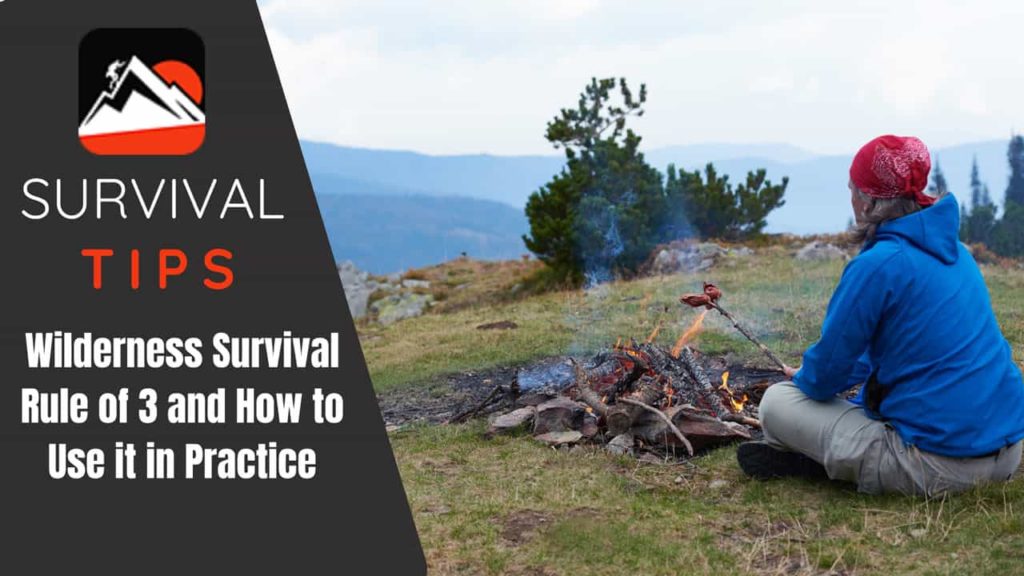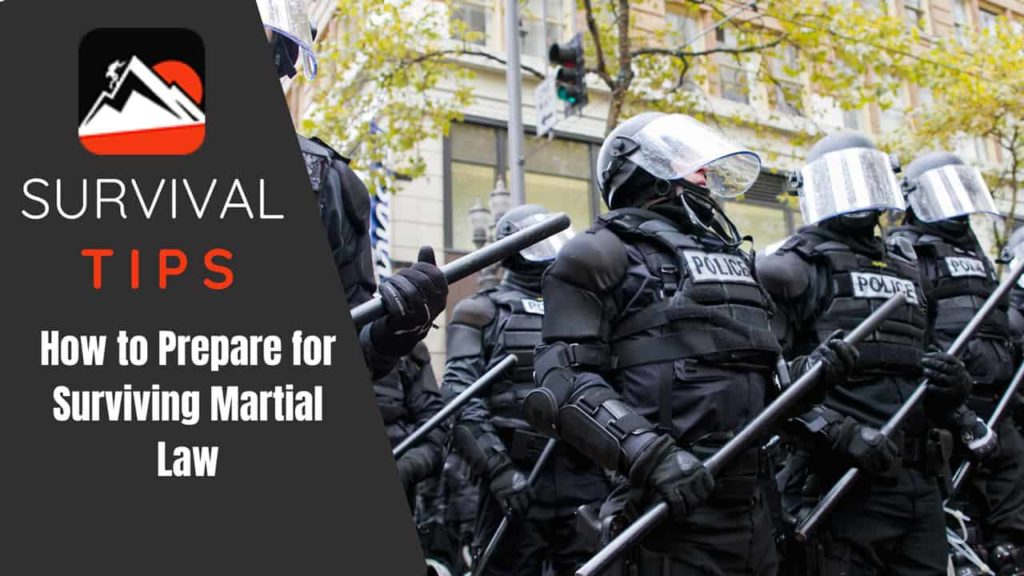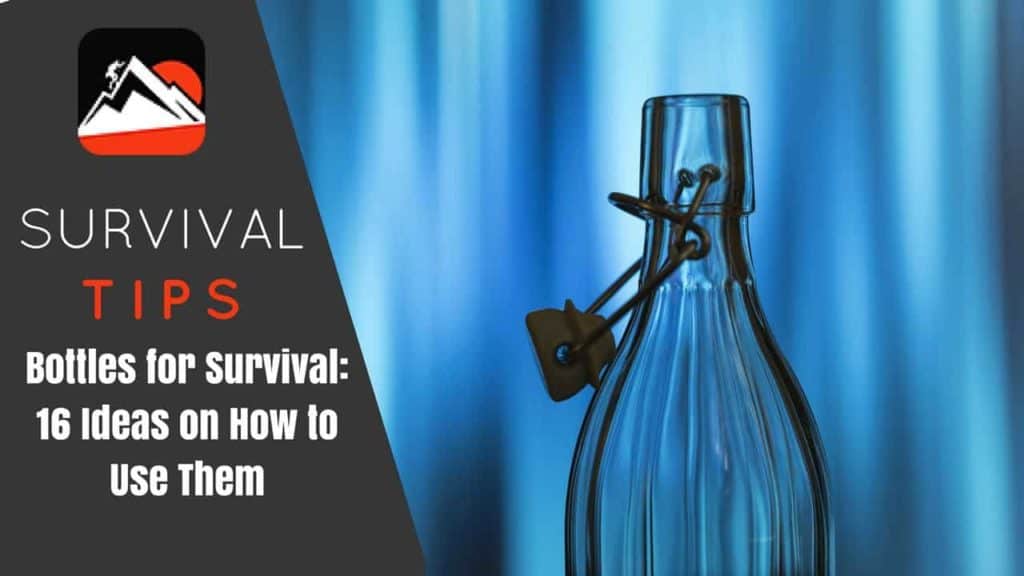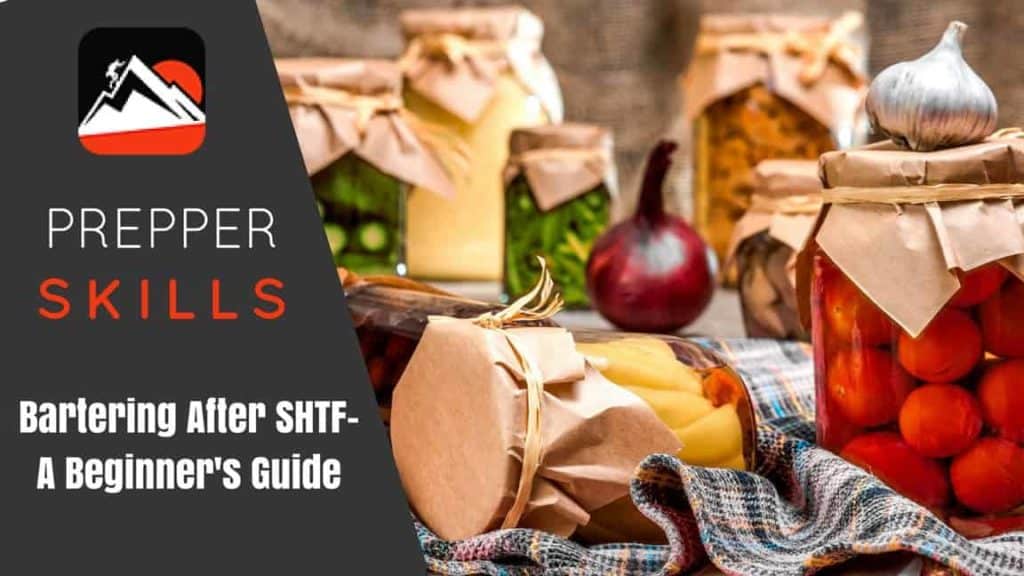Contents
In most cases particular survival, what stands out is having any organization in terms of processes that are tied to a deadline. Even when in a less dramatic survival situation where you have a high chance of persevering, it’s still stressful. Different issues need to be handled and organized, almost as if they were projects that contending for your time and attention until you have gotten back to civilization.
The purpose of the rule of three is to create a blueprint of survival principles. This article will offer in-depth analysis on the importance of this set of principles.
Survival Rule of 3 – Air, Shelter, Water, and Food
The most basic of all elements of life is air. However, shelter, water, and food are also needed for long-term survival. The human body can live for up to…
- 3 minutes without air
- 3 hours without shelter
- 3 days without water
- 3 weeks without food
This list is done by priority. Obviously, air is the strictest and most immediate requirement. The three other requirements are just as basic, but lower in priority because they aren’t as immediate. One question people may ask is, is the rule of three scientifically proven and accurate?
The answer is yes, when relating to specific rules for air, water, and food. It proves to be the most accurate with a healthy person altogether.
You might also find interesting our article about survival skills 101.
Survival Rule of 3 and Survival Priorities
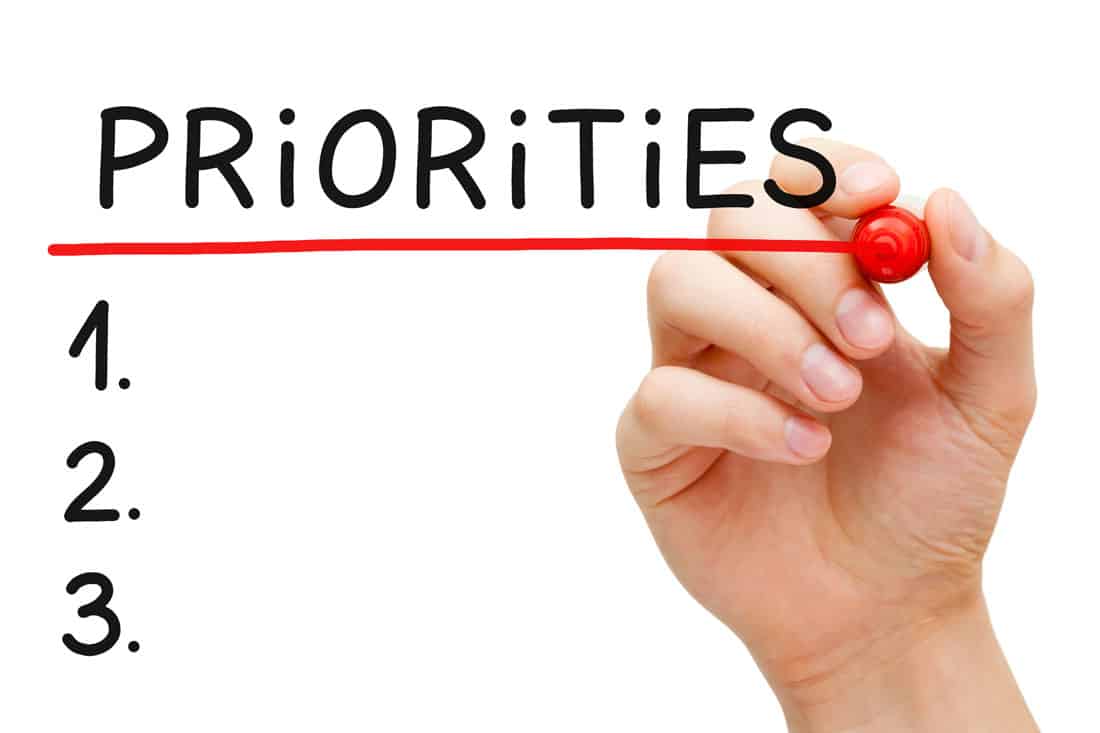
It’s a challenge to get all the resources that are needed for survival in many environments, but it isn’t impossible. The challenge is going beyond common sense in the situation and having a degree of knowledge that applies to the environment. One of the greatest challenges will always be food, as certain knowledge will be elusive to someone who’s unfamiliar with the animal behavior and habits of the region in which they are stranded. Let’s take a more in-depth look at the rules.
You Can Only Survive for Three Minutes Without Air
As previously mentioned and discussed, oxygen is the most basic necessity for survival. If you suffer from breathing issues and conditions, such as asthma, being aware of your limits is vital in a survival situation.
Having a handle on other resources will also help with the management of stress and your mindset. Another great example is doing activities and sports outdoors that, no matter how experienced you are, can be dangerous. Specifically, trail riders you are likely to hit a rock or other obstruction sooner or later.
What tends to happen is you get thrown off the bike or hit the center of the handlebars with so much force that it knocks the wind out of you. The more medical term is a solar plexus attack. Getting hit in the solar plexus, below the chest, disrupts the function of the diaphragm in the form of a spasm.
If this were to happen to anyone, the chances of them going without air would be well below three minutes. However, it is important to rest for as much time as possible in any situation, whether it be survival or otherwise.
You Can Only Survive Three Hours Without Shelter
This principle is easily the most flexible in terms of what a shelter is. Sometimes your shelter may not be ideal for the situation, but can be improved with improvisation. In a survival situation where you didn’t plan on camping, you may have to build your shelter quickly. a lean-to shelter is always the easiest.
The reason this rule comes in at three hours is because it’ll take up a good chunk of time to gather supplies, plan, and build a structure.
We also recommend reading our article about the most disaster-prone states in the USA.
3 Days Without Water
Common sense in any situation dictates that the human body must stay hydrated to perform normally or even above expected levels. Among other survival priorities, staying hydrated should be at the top of that list after other resources have been established.
Another aspect that I will mention is having something to keep your electrolytes up. In some areas of the natural world, this can be provided by certain waters contained within plants, such as coconuts, cactus water (not all cactus water is drinkable; if it looks discolored or like it may be dying, the water content inside may be undrinkable), or some kind of fruit or vegetable that has a high water content. If you can’t rely on nature to provide these sources of electrolytes, it’s good to buy drink mixes that you can find in stores or online. However, keep in mind that the more science-backed they are, the more expensive they may be.
For water to be potable and drinkable when collected from a stream, river, or any other water source, it will need to be purified. That can be done by boiling it over a fire. Fire is required in any survival situation for other reasons, but it can and should be used to boil water. A water filter system of some kind can be also used for a less time-consuming approach to getting clean drinking water. They can be found anywhere, but the best for the outdoors is portable in design. Popular brands like LifeStraw would be a good option for most people.
3 Weeks Without Food
In terms of priority, food comes lower on this list because of the other things that would need to be established before it. Just because it’s lower on the scale of immediate needs, however, does not mean that it should be treated as such. It’s unusual for someone to skip a meal in everyday life but, then again, some can maintain their health through science-supported habits like fasting. However, that is in a controlled environment. There is no way to mentally prepare for the limited food in a survival situation when it’s normal for you to eat three meals a day.
Psychologically, keep your motivation up and your ability to endure hardships will help you here. Having enough water, among other things, will be particularly helpful.
To avoid an emergency situation of having no food, carrying a gun is an advantage. Handguns altogether are better than nothing, but others tools, skills, and technique can help you get food.
3 Months Without Hope
If you’re in a long-term survival situation, having hope that you will one day get back to your life can be helpful. However, it can also put you into an emotional state that leads toward a downward spiral. Thus, it’s best to occupy your time with projects that will continue to improve your situation. Most importantly, if you are lost, stranded, or whatever situation in between, it’s up to you to get yourself out. Stretch your resources out for as long as you can. You may be forced to make hard decisions. A good instance of that would be; Do I have a better chance of staying in place to get rescued, or will I have to find a way out of the situation?
The best explanation that I can come up with is that you may only be able to stay in one place for so long – until you either get rescued or have to move on to another location that may have better resources.
In most cases, you can find a wide-open area where you could set up a signal fire. However, make sure to have a hideout where you can be protected against some threats, such as predators and less than favorable weather conditions.
Is the Rule of 3 Survival Plan Misleading?
The best way to understand the rule of 3 is to understand the flexibility they have as guidelines. These principles would not work in the exact order that is presented in this article. After all, people tend to forget that preparation is key to any survival situation.
If you get the knowledge needed to put yourself ahead in any survival situation, the rule of 3 will enable you to think with efficiency before and during an event. If you hadn’t sought out knowledge on survival, you would be winging it a little bit (or a lot more) than you planned.
What Else Do You Need To Be Prepared?
Among the most important things you need (in addition to knowing the importance of air, water, food, and shelter) are the skills to procure those resources. These skills can be various and numerous, but you can whittle it down to the most important of skills. These are medical skills, tool making, shelter building, and general knowledge of how to get out of a survival situation alive.
Medical Skills
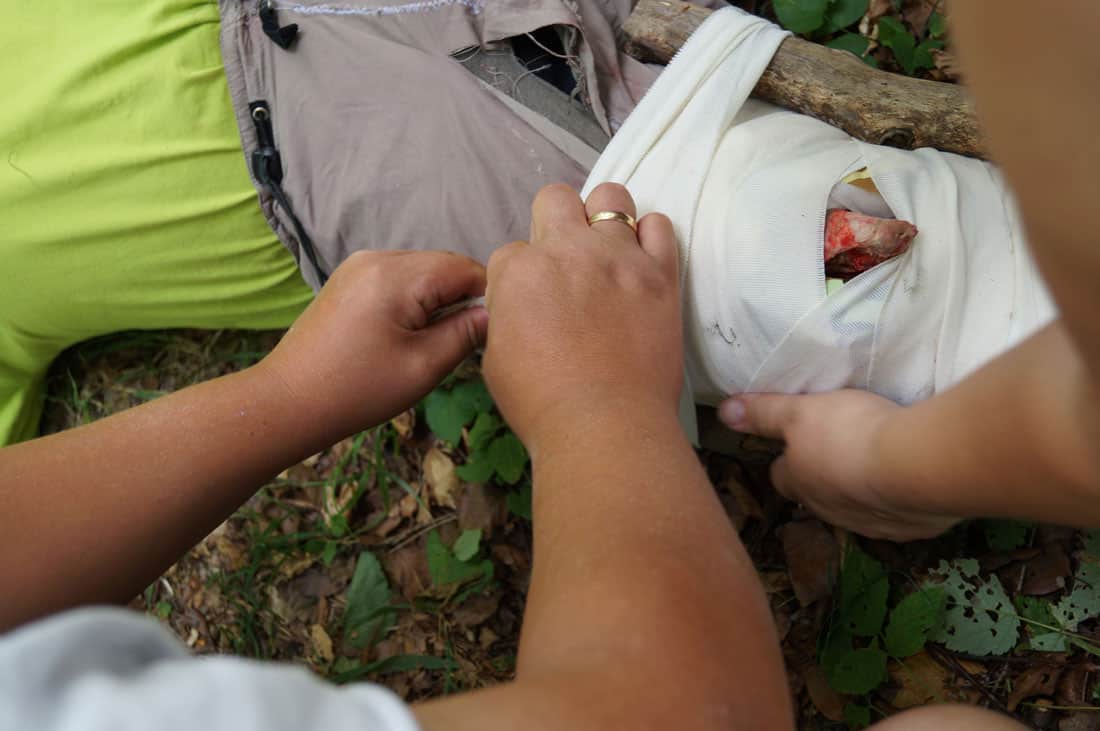
The basics of medical skills are separated into different the conditions you could experience in a survival situation. These include dehydration, hypothermia, hyperthermia, and broken bones.
Dehydration
Dealing with dehydration can quickly become life-threatening. Although it can be dealt with by staying cool and resting, it’s important to know the signs and symptoms in yourself and others, as well as what may have caused it. These causes include excessive sweating, vomiting, diarrhea, burns, and diabetes. Here are the signs and symptoms of dehydration:
- Dark Urine
- Confusion
- Cool skin
- Dry mouth
- Clammy skin
- Increased thirst
- Tiredness
- Weakness
Out of all these, the most obvious would be thirst and dark urine, which can be yellow to an almost brown color. If someone is tired and weak after sleeping or taking a nap that gives little to no relief, then that’s another specific example of dehydration. The coolness of the skin to the touch in extreme heat is also another big warning sign.
Hypothermia/Hyperthermia
The term hypothermia is commonly used to describe a drop in the body temperature to below 98.6 F. Here are the symptoms of hypothermia:
- Shivering
- Slurred speech or mumbling
- Slow, shallow breathing
- Weak pulse
- Clumsiness or lack of coordination
- Drowsiness or very low energy
- Confusion or memory loss
- Loss of consciousness
Hyperthermia is a lesser-used term than its counterparts, which are heatstroke and heat exhaustion. Hyperthermia is when the body temperature is higher than normal.
It can come with many different symptoms ranging from mild to extreme. Here are some specific heat-related conditions caused by hyperthermia:
Heat stress– This a condition of overheating to the point of being unable to cool down the body. If continued, heat exposure can turn into heat exhaustion or heat stroke. Symptoms include thirst, a headache, dizziness, weakness, and nausea. Treatment should involve keeping yourself cool by drinking water and fluids with electrolytes. This keeps the body chemically balanced and helps with muscle health, as well as regulation of nerve and heart function, as mentioned earlier.
Heat fatigue & Heat Syncope– Both conditions are more likely to occur the longer the heat exposure goes on. However, it can seem like the person dealing with it is still able to function because this condition can strike even if you are hydrated and being careful. It also occurs in situations where people are overworking themselves or if someone who is unused to being in desert or tropical heat.
Heat syncope is a more extreme condition that requires hospital treatment. Syncope is also known as fainting and is caused by lowering blood pressure. It is dangerous because of slowed circulation to the brain. Thankfully, this condition is unlikely to develop in a survival environment if the previous conditions occur and are treated with rest and hydrating in a cool area. However, that is key to recovery in any survival situation where heat-related conditions occur.
Broken Bones
Broken bones – or any injury to the extremities that can hinder circulation or cause circulation problems – is of the highest concern. These injuries can include a broken tibia, fibula, or femur in the lower body, while the upper body can experience a dislocated shoulder, broken wrist, or radius/ulna damage. The common treatment for any of these is isolation and stabilization of the affected area. This can be done by splinting the extremity or creating some kind of brace, or by making a swath that will stabilize a broken arm.
There are two main types of fractures: an open fracture and a closed fracture. There are also other types that can be classified, but are not as important as these two. To make a splint, you can use two straight sticks tied together with cordage or cloth that might be from torn clothes or something like that. A swathe can be made by using a scarf, bandanna, or a triangular bandage which is purpose-made for swathes, or even a sling. Stabilizing an open fracture is more complex than just putting the limb in a splint or a sling; the limb must first have traction applied to it. This involves pulling on the limb with gentle but constant pressure to straighten or realign the limb.
Tools & Fire-making
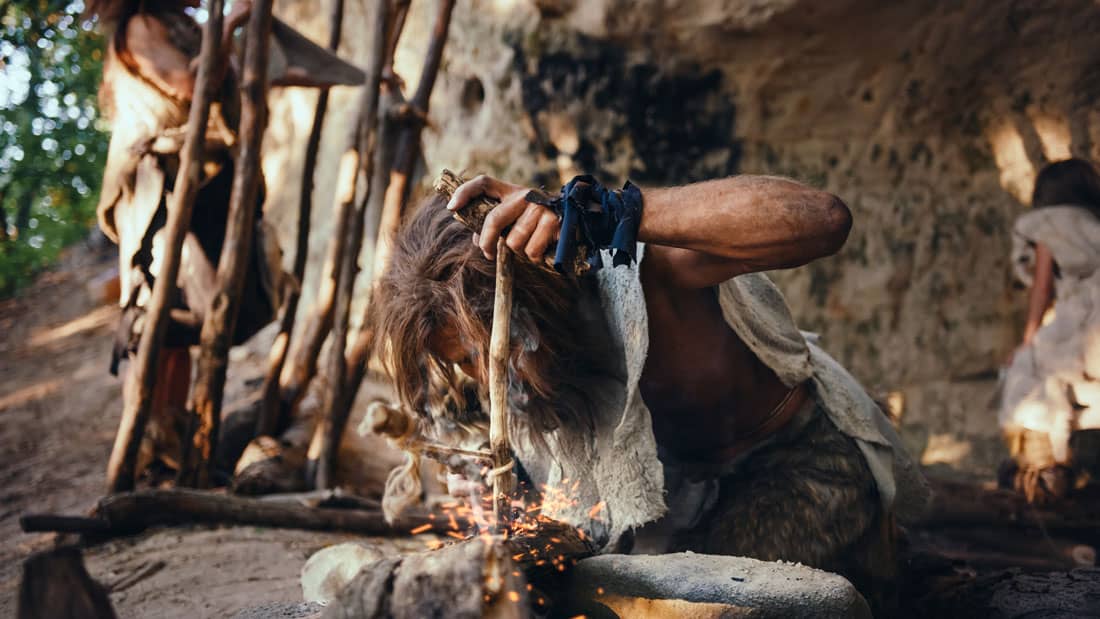
The need to make tools and the ability to create fire are integral to survival in the long-term. What should be considered is that the best tools are those that are multi-purpose. The go-to tools that you would need are as listed:
- Rope or cordage: This is most likely something that will be improvised with using whatever is available. Paracord is a reliable type of cordage that can be used and reused.
- Multi-tool: One of the other basic tools that can be used for gripping things or as a fastening device. A multitool that comes as a pair of pliers but with extra tools is a great option.
- Knife: A knife is great because there is no substitute for it in terms of carving and cutting, which you’ll end up doing plenty of. Although a full tang knife is better than a pocket knife, both will have their pros and cons.
Conclusion
This article has hopefully served its purpose in terms of highlighting the preparation and amount of thought that can be put into the rule of 3. It is important to understand that, even in a survival situation, you can choose how to deal with setbacks and have positivity in the face of uncertainty. It’s also important to remember that having a mindset of preparedness requires constant research and knowledge; getting out and experiencing nature is the best way to learn.
References:
- https://www.survivalsullivan.com/survival-rule-threes-depth-explaination/
- https://thesurvivaljournal.com/survival-rule-of-threes/
- https://offgridsurvival.com/survivalmindset/
- https://www.youtube.com/watch?v=OSnxSdbxexU
- https://www.medicinenet.com/dehydration_symptoms_and_signs/symptoms.htm
- https://www.mayoclinic.org/diseases-conditions/hypothermia/symptoms-causes/syc-20352682
- https://www.healthline.com/health/hyperthermia#stages

